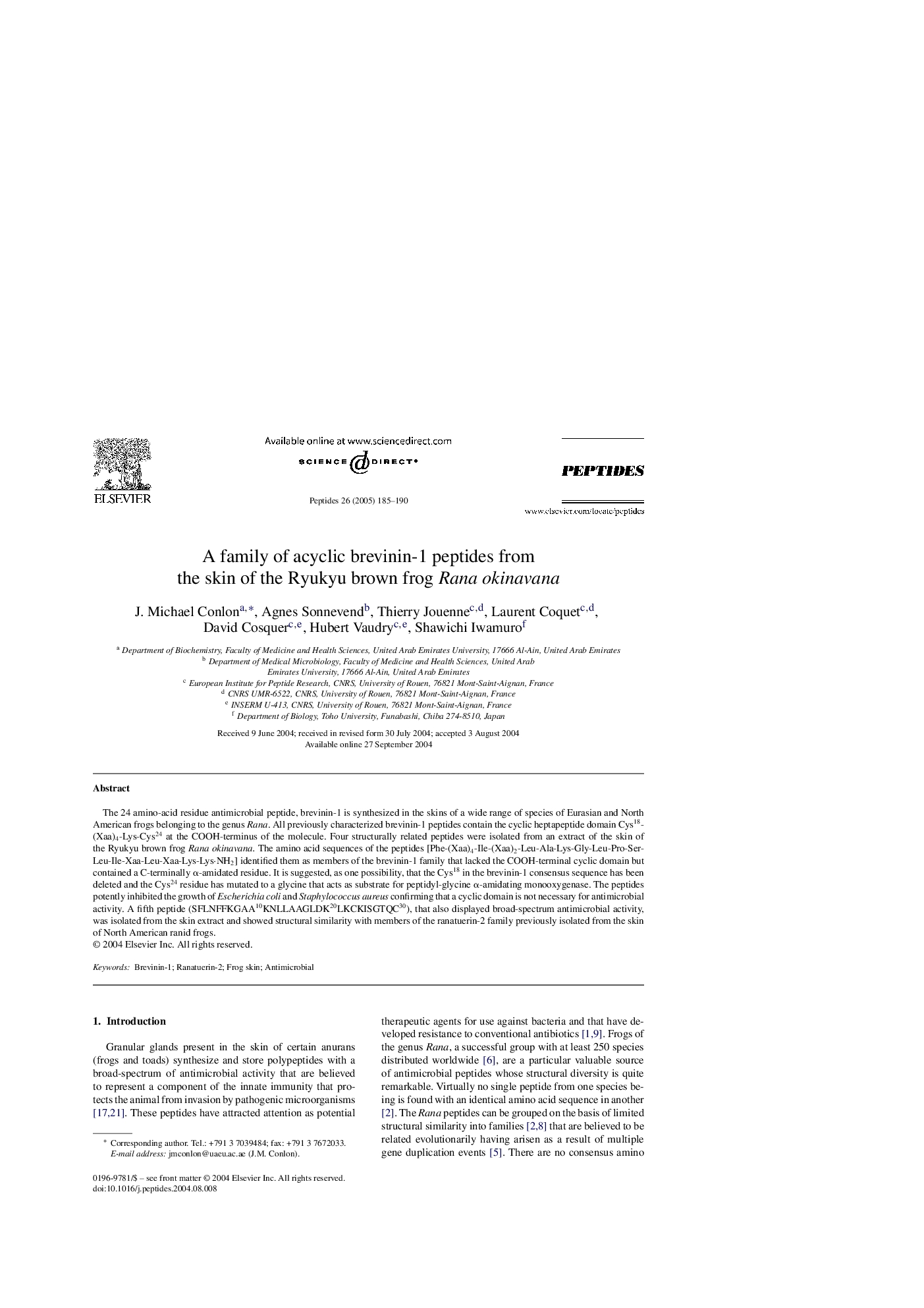| Article ID | Journal | Published Year | Pages | File Type |
|---|---|---|---|---|
| 10837000 | Peptides | 2005 | 6 Pages |
Abstract
The 24 amino-acid residue antimicrobial peptide, brevinin-1 is synthesized in the skins of a wide range of species of Eurasian and North American frogs belonging to the genus Rana. All previously characterized brevinin-1 peptides contain the cyclic heptapeptide domain Cys18-(Xaa)4-Lys-Cys24 at the COOH-terminus of the molecule. Four structurally related peptides were isolated from an extract of the skin of the Ryukyu brown frog Rana okinavana. The amino acid sequences of the peptides [Phe-(Xaa)4-Ile-(Xaa)2-Leu-Ala-Lys-Gly-Leu-Pro-Ser-Leu-Ile-Xaa-Leu-Xaa-Lys-Lys·NH2] identified them as members of the brevinin-1 family that lacked the COOH-terminal cyclic domain but contained a C-terminally α-amidated residue. It is suggested, as one possibility, that the Cys18 in the brevinin-1 consensus sequence has been deleted and the Cys24 residue has mutated to a glycine that acts as substrate for peptidyl-glycine α-amidating monooxygenase. The peptides potently inhibited the growth of Escherichia coli and Staphylococcus aureus confirming that a cyclic domain is not necessary for antimicrobial activity. A fifth peptide (SFLNFFKGAA10KNLLAAGLDK20LKCKISGTQC30), that also displayed broad-spectrum antimicrobial activity, was isolated from the skin extract and showed structural similarity with members of the ranatuerin-2 family previously isolated from the skin of North American ranid frogs.
Related Topics
Life Sciences
Biochemistry, Genetics and Molecular Biology
Biochemistry
Authors
J. Michael Conlon, Agnes Sonnevend, Thierry Jouenne, Laurent Coquet, David Cosquer, Hubert Vaudry, Shawichi Iwamuro,
